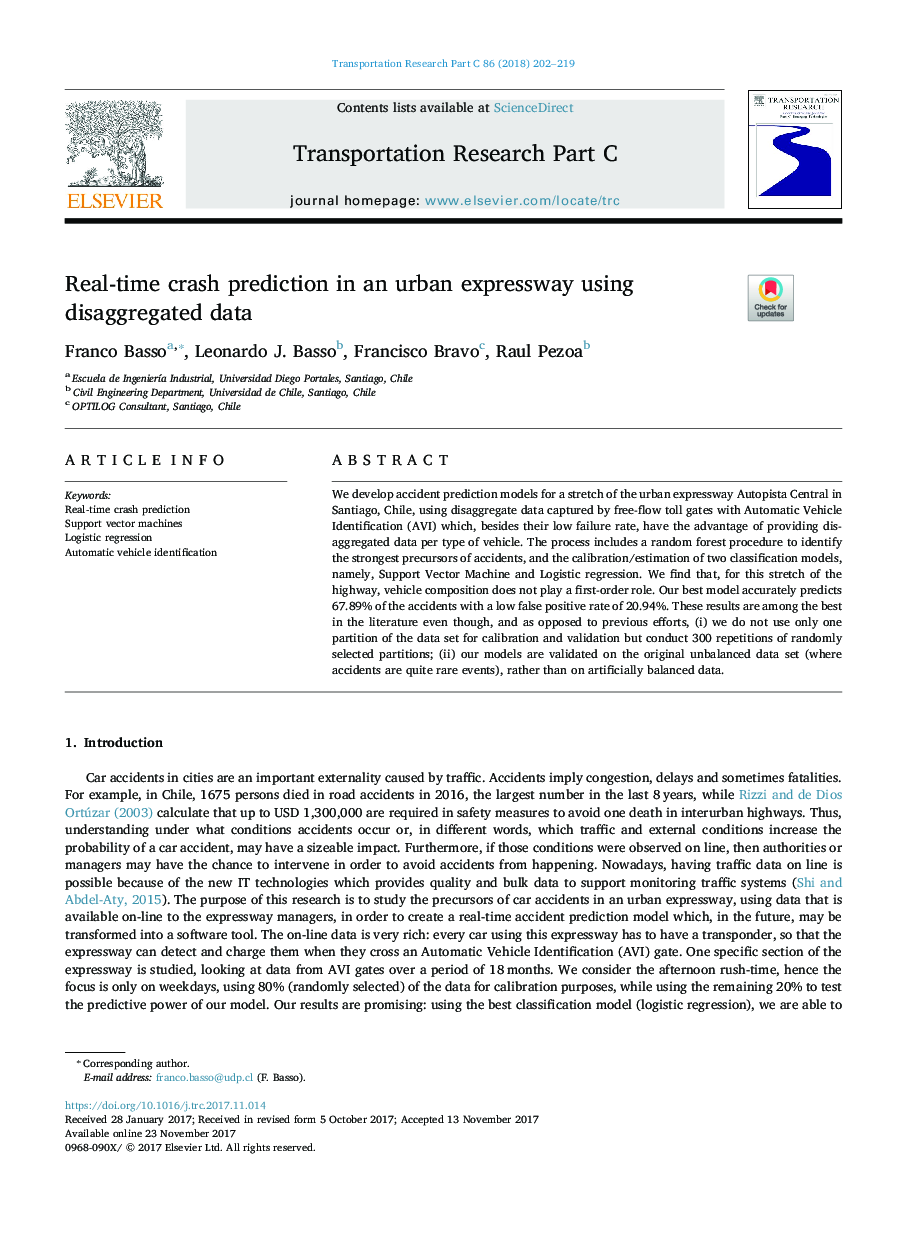| Article ID | Journal | Published Year | Pages | File Type |
|---|---|---|---|---|
| 6936220 | Transportation Research Part C: Emerging Technologies | 2018 | 18 Pages |
Abstract
We develop accident prediction models for a stretch of the urban expressway Autopista Central in Santiago, Chile, using disaggregate data captured by free-flow toll gates with Automatic Vehicle Identification (AVI) which, besides their low failure rate, have the advantage of providing disaggregated data per type of vehicle. The process includes a random forest procedure to identify the strongest precursors of accidents, and the calibration/estimation of two classification models, namely, Support Vector Machine and Logistic regression. We find that, for this stretch of the highway, vehicle composition does not play a first-order role. Our best model accurately predicts 67.89% of the accidents with a low false positive rate of 20.94%. These results are among the best in the literature even though, and as opposed to previous efforts, (i) we do not use only one partition of the data set for calibration and validation but conduct 300 repetitions of randomly selected partitions; (ii) our models are validated on the original unbalanced data set (where accidents are quite rare events), rather than on artificially balanced data.
Related Topics
Physical Sciences and Engineering
Computer Science
Computer Science Applications
Authors
Franco Basso, Leonardo J. Basso, Francisco Bravo, Raul Pezoa,
